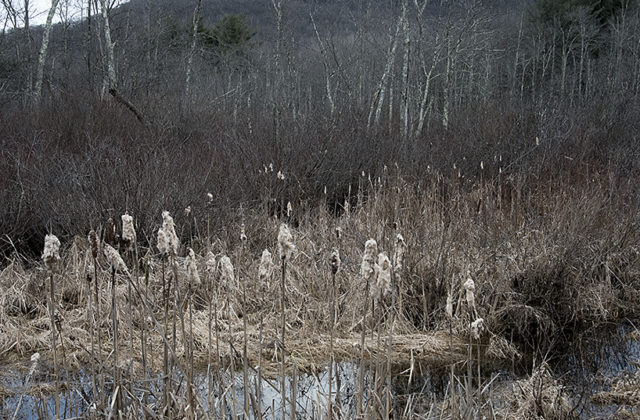Norfolk Land Trust Takes On 24 Acres in North Canaan
By Sally Quale
Last September, the Norfolk Land Trust (NLT) was given 24 acres in North Canaan, located within the 1,500-acre Robbins Swamp, the state’s largest inland wetland complex. The majority of Robbins Swamp is a calcareous wetland with a small upland portion of primarily pine and hemlock. The Nature Conservancy and the state already hold large portions of the swamp as conserved land.
Robbins Swamp is known to be a biologically diverse ecosystem, hosting many rare and endangered species that have been identified and included in Connecticut Department of Energy and Environmental Protection’s Natural Diversity Database. The 24 acres of the swamp given to the NLT lie between Route 7 and Sand Road in the part of the wetland that drains west to the Blackberry River and eventually to the Housatonic, whereas the majority of Robbins Swamp drains east to the Hollenbeck, and then to the Housatonic.
Originally part of a larger tract of land known as Meadowland Farm, it was purchased by Frank Hitchcock in 1899 and has been held and protected by the Hitchcock family of North Canaan until last September when brothers Tim and Martin Hitchcock decided to place it in perpetual conservation. Since North Canaan does not have a local organization to accept land donations, they consulted Tim Abbott, Director of the Litchfield Hills Greenprint Collaborative, who recommended the NLT.
Ryan Williams, a recent new NLT board member as well as current Conservation Projects Manager at the Housatonic Valley Association, brought the parcel to the land trust’s attention and played a key role in processing the acquisition. The Greenprint Collaborative provided a grant through its Landowner Incentive Fund to cover legal expenses and the Phase 1 Environmental Site Assessment.
The 24-acre parcel is a welcome and much appreciated addition to the NLT’s inventory of over 4,000 acres in Norfolk, Colebrook and Canaan. They are all protected to preserve scenic beauty and environmentally valuable property for future generations.
For a look at the new NLT area, one can simply stand along the east side of Sand Road, south of the railroad crossing just below Route 7 and opposite the large cemetery on the west side. Looking east beyond the train tracks, you can enjoy a totally wild, wet landscape stretched out before you. You might bring binoculars or a camera, or move to the edge of the nearby marsh to listen, to observe and possibly even to spot one or two of those rare or endangered species that now will continue to flourish.
Photo by Bruce Frisch.

